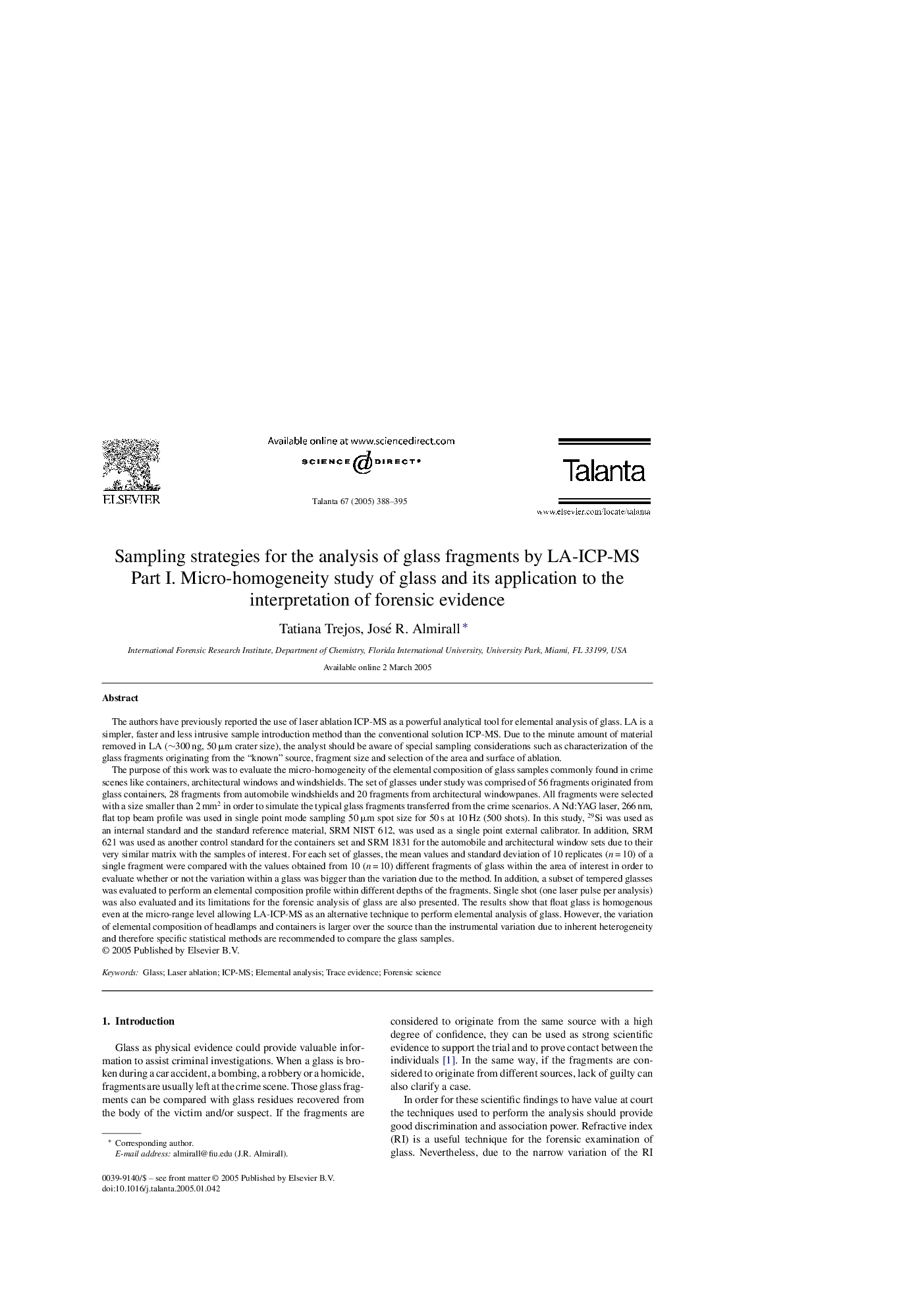| Article ID | Journal | Published Year | Pages | File Type |
|---|---|---|---|---|
| 10560754 | Talanta | 2005 | 8 Pages |
Abstract
The purpose of this work was to evaluate the micro-homogeneity of the elemental composition of glass samples commonly found in crime scenes like containers, architectural windows and windshields. The set of glasses under study was comprised of 56 fragments originated from glass containers, 28 fragments from automobile windshields and 20 fragments from architectural windowpanes. All fragments were selected with a size smaller than 2 mm2 in order to simulate the typical glass fragments transferred from the crime scenarios. A Nd:YAG laser, 266 nm, flat top beam profile was used in single point mode sampling 50 μm spot size for 50 s at 10 Hz (500 shots). In this study, 29Si was used as an internal standard and the standard reference material, SRM NIST 612, was used as a single point external calibrator. In addition, SRM 621 was used as another control standard for the containers set and SRM 1831 for the automobile and architectural window sets due to their very similar matrix with the samples of interest. For each set of glasses, the mean values and standard deviation of 10 replicates (n = 10) of a single fragment were compared with the values obtained from 10 (n = 10) different fragments of glass within the area of interest in order to evaluate whether or not the variation within a glass was bigger than the variation due to the method. In addition, a subset of tempered glasses was evaluated to perform an elemental composition profile within different depths of the fragments. Single shot (one laser pulse per analysis) was also evaluated and its limitations for the forensic analysis of glass are also presented. The results show that float glass is homogenous even at the micro-range level allowing LA-ICP-MS as an alternative technique to perform elemental analysis of glass. However, the variation of elemental composition of headlamps and containers is larger over the source than the instrumental variation due to inherent heterogeneity and therefore specific statistical methods are recommended to compare the glass samples.
Related Topics
Physical Sciences and Engineering
Chemistry
Analytical Chemistry
Authors
Tatiana Trejos, José R. Almirall,
